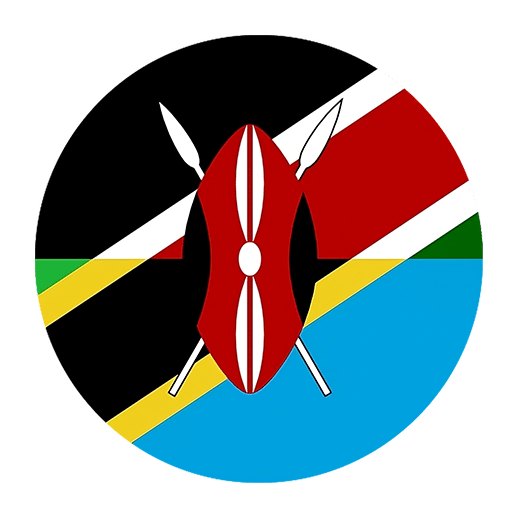In today’s digital age, social media has revolutionized the way we communicate, interact, and learn. For language enthusiasts, social media platforms offer a unique and engaging way to immerse oneself in a new language. Swahili, a Bantu language spoken by millions across East Africa, is no exception. By leveraging social media, learners can practice Swahili in real-time, connect with native speakers, and access a plethora of resources that make the learning process enjoyable and effective.
Why Learn Swahili?
Swahili, also known as Kiswahili, is a beautiful and melodic language with rich cultural significance. It is the official language of Kenya, Tanzania, and Uganda, and is widely spoken in several other countries, including the Democratic Republic of Congo, Mozambique, and Comoros. Learning Swahili opens doors to understanding East African culture, history, and literature. Additionally, it can enhance travel experiences, create job opportunities in international organizations, and foster intercultural communication.
Choosing the Right Social Media Platforms
Different social media platforms offer various features that can aid in language learning. Here are some of the most effective ones for learning Swahili:
Facebook is a versatile platform that can be used to join Swahili language learning groups, follow pages dedicated to Swahili culture, and interact with native speakers. Here are some ways to use Facebook:
1. Join Swahili Learning Groups: Search for groups such as “Learn Swahili” or “Swahili Language Learners.” These groups often share useful resources, practice exercises, and provide a community of learners and native speakers who can offer support and answer questions.
2. Follow Swahili Pages: Pages dedicated to Swahili culture, news, and language can provide daily exposure to the language. Pages like “SwahiliPod101” and “Learn Swahili with Anna” post regular content that can help you learn new vocabulary and phrases.
3. Participate in Discussions: Engage in conversations with native speakers and other learners. This practice can improve your writing skills and help you learn colloquial expressions.
Twitter’s real-time nature makes it an excellent platform for language learning. Here’s how you can use Twitter to learn Swahili:
1. Follow Swahili Influencers: Follow accounts of Swahili-speaking influencers, educators, and news outlets. This will expose you to authentic Swahili used in various contexts.
2. Use Hashtags: Search for hashtags like #LearnSwahili, #SwahiliLanguage, and #Kiswahili. These hashtags can lead you to tweets, discussions, and resources related to Swahili learning.
3. Tweet in Swahili: Try tweeting in Swahili. You can start with simple sentences and gradually increase complexity as you become more comfortable. Engaging with native speakers who respond to your tweets can provide valuable feedback.
Instagram is a visually-driven platform that can be surprisingly effective for language learning. Here’s how:
1. Follow Language Learning Accounts: Accounts like @learnswahili and @swahili.language post regular content, including vocabulary, phrases, and cultural tidbits.
2. Use Stories and Reels: Watch stories and reels from Swahili-speaking users. These short videos can provide insights into daily life, culture, and language usage.
3. Engage with Content: Comment on posts in Swahili, and interact with other users. This practice can enhance your writing skills and help you learn new expressions.
YouTube
YouTube is a treasure trove of educational content. Here’s how to use it for learning Swahili:
1. Subscribe to Swahili Channels: Channels like “SwahiliPod101” and “Learn Swahili with Tuka” offer structured lessons, vocabulary lists, and cultural insights.
2. Watch Videos with Subtitles: Look for Swahili videos with English subtitles or vice versa. This can help you understand the context and improve your listening skills.
3. Practice Speaking: Repeat after the speakers in the videos to practice pronunciation and intonation.
TikTok
TikTok’s short-form video format can make language learning fun and engaging. Here’s how:
1. Follow Language Tutors: Many language tutors use TikTok to share quick lessons, tips, and cultural insights. Follow accounts like @learnswahili and @swahililanguage.
2. Create Your Own Content: Try creating your own videos in Swahili. This can be a fun way to practice speaking and receive feedback from native speakers.
3. Engage with Native Speakers: Comment on videos and participate in language challenges to practice writing and comprehension skills.
Maximizing the Benefits of Social Media for Language Learning
While social media can be a powerful tool for learning Swahili, it’s essential to use it effectively. Here are some tips to maximize your learning experience:
Set Clear Goals
Determine what you want to achieve with your Swahili learning. Whether it’s improving vocabulary, mastering grammar, or becoming conversationally fluent, having clear goals will help you stay focused and motivated.
Consistency is Key
Dedicate a specific amount of time each day to practice Swahili on social media. Consistency is crucial for language acquisition, so make it a part of your daily routine.
Engage Actively
Passive consumption of content is less effective than active engagement. Participate in discussions, comment on posts, and practice writing and speaking as much as possible.
Leverage Multimedia Resources
Use a combination of text, audio, and video resources to enhance your learning. This will help you develop a well-rounded understanding of the language.
Connect with Native Speakers
Building relationships with native speakers is invaluable. They can provide authentic language practice, cultural insights, and corrections to help you improve.
Use Language Learning Apps in Conjunction
While social media is a fantastic tool, using it alongside language learning apps like Duolingo, Babbel, or Rosetta Stone can provide structured lessons and reinforce your learning.
Practical Examples of Using Social Media to Learn Swahili
To give you a concrete idea of how to use social media for learning Swahili, here are some practical examples:
Example 1: Using Facebook Groups
Join a Facebook group like “Swahili Language Learners.” Participate in weekly challenges where members post sentences in Swahili, and others provide corrections and feedback. Share your own sentences and learn from the corrections provided by native speakers.
Example 2: Following Twitter Accounts
Follow Swahili news outlets like @BBCSwahili and influencers like @SwahiliTeacher. Engage with their tweets by replying in Swahili. For example, if @BBCSwahili tweets about a news story, reply with a comment or question in Swahili to practice your writing skills.
Example 3: Watching YouTube Videos
Subscribe to “SwahiliPod101” on YouTube. Watch a video lesson on common Swahili phrases, and then practice by creating your own sentences using the phrases learned. Comment on the video to engage with the community and receive feedback.
Example 4: Creating TikTok Videos
Create a TikTok account dedicated to your Swahili learning journey. Post videos of yourself practicing Swahili phrases, sharing cultural insights, or participating in language challenges. Engage with other users by commenting on their videos and participating in duets.
Challenges and How to Overcome Them
While social media offers numerous benefits for language learning, it also comes with challenges. Here are some common challenges and how to overcome them:
Challenge 1: Distractions
Social media can be distracting, with endless content vying for your attention. To overcome this, set specific time limits for language practice and use tools like website blockers to minimize distractions.
Challenge 2: Misinformation
Not all information on social media is accurate. Ensure you follow reputable accounts and cross-check information from multiple sources. Joining groups with knowledgeable moderators can also help you access reliable content.
Challenge 3: Lack of Structure
Social media lacks the structured curriculum of traditional language courses. To address this, use social media in conjunction with structured language learning apps and resources. Create a study plan that incorporates both structured lessons and social media practice.
Challenge 4: Fear of Making Mistakes
Many learners fear making mistakes in public forums. Remember that making mistakes is a natural part of language learning. Embrace them as learning opportunities and seek constructive feedback from native speakers and fellow learners.
Conclusion
Social media offers a dynamic and interactive way to learn Swahili. By leveraging platforms like Facebook, Twitter, Instagram, YouTube, and TikTok, learners can immerse themselves in the language, connect with native speakers, and access a wealth of resources. Setting clear goals, staying consistent, actively engaging with content, and using multimedia resources are key to maximizing the benefits of social media for language learning. While challenges exist, they can be overcome with the right strategies and mindset. Embrace the opportunities that social media provides, and embark on an exciting journey to mastering Swahili.

